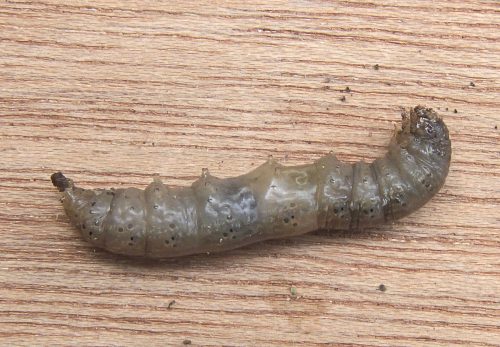Leatherjackets are the larvae of the crane fly.
Also known as:
Crane flies
Daddy-longlegs
Do not confuse with:
Larvae of the hawthorn fly (Bibio marci) – these have a black head, those of leatherjackets have a brown one.
Leatherjackets are the brown-grey larvae of the crane fly (Tipulidae family). Leatherjackets are ± 30 mm long and – when they are adults – feed on the leaves and roots of the young grass during warm summer nights, causing the grass plants to die, resulting in a bald spot.
Young leatherjackets feed on dead plant debris. Adult leatherjackets also eat plant roots. If there are really many, leatherjackets can do a lot of damage. As the nights warm, leatherjackets go above ground and feed on plants at ground level.
Shrews, rooks and starlings are among the natural enemies of leatherjackets.
Where to find
- Grass
- Lettuce
Control
Control with nematodes (roundworms): Steinernema carpocapsae. This insect parasitic nematode invades and kills the leatherjacket. Fall is the best time to to control leatherjackets.
Prevention
Prevention is almost impossible. Planting aromatic herbs reduces the number of crane flies and thus the arrival of leatherjackets. Creating a bird-friendly environment will certainly help prevent excess leatherjackets.

